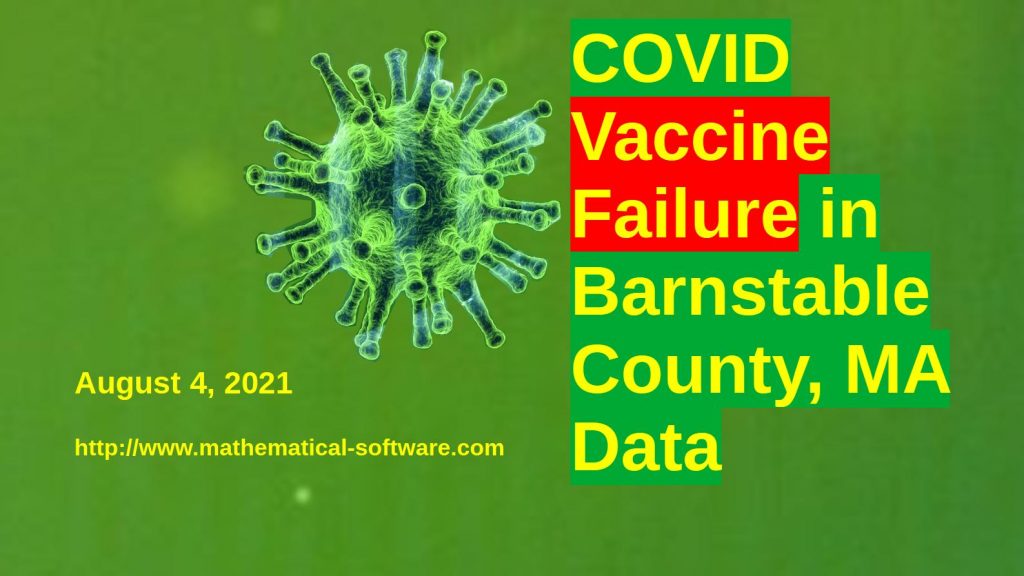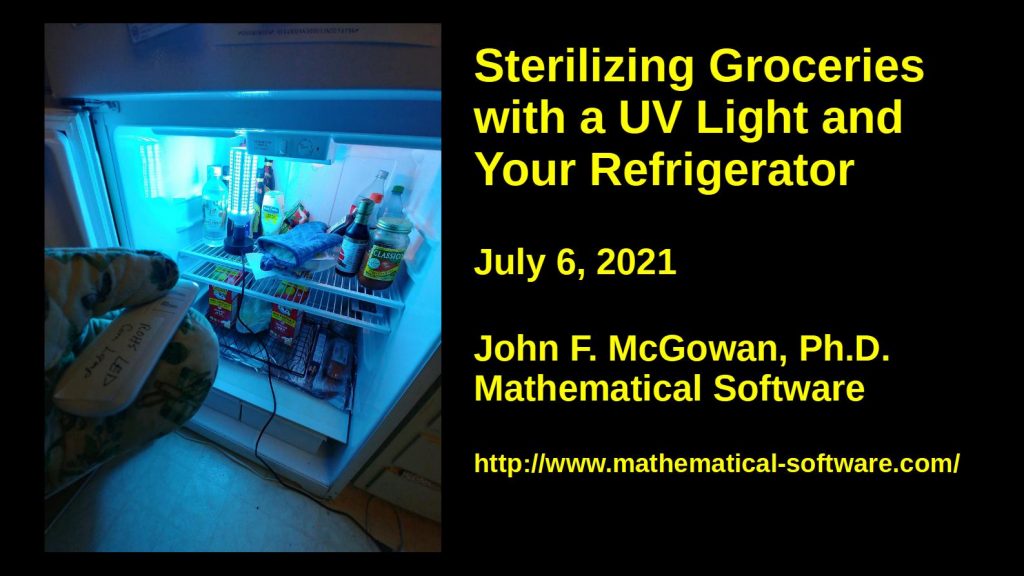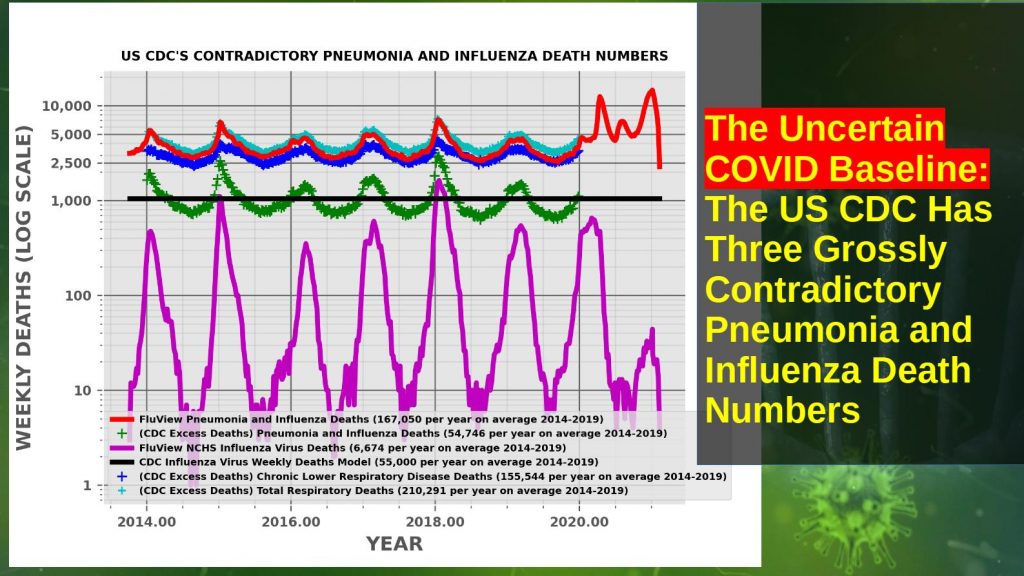Introduction
Antibody Dependent Enhancement (ADE) is a phenomenon that has been observed with a number of vaccines in which the vaccine initially produces no or negligible adverse effects but when the vaccinated person or animal actually encounters the virus or bacteria the vaccine is intended to stop, the immune system overreacts to the infection and harms or kills the vaccinated person. Prior to the COVID-19 pandemic, previous attempts to develop vaccines to prevent coronavirus infections such as SARS (2003, not SARS-COV-2) and MERS failed due to ADE.
How likely is potentially fatal antibody dependent enhancement (ADE) with the COVID-19 vaccines? Simple answer: we don’t know. We are conducting a gigantic uncontrolled experiment on a large fraction of the human race.
The Moderna clinical trials of their RNA COVID-19 vaccine, linked and discussed at the end of this article, suggest that ADE reactions in generally healthy persons similar to the test subjects in their trial are probably (95% confidence level) less than one in sixty-six (66) persons (1.5 percent) using the rule of three in statistics. This is based on a tiny sample of only 196 persons in the trial who actually developed COVID-19 — were actually exposed to the virus. ADE does not appear to have been reported in any of these 196 cases.
UPDATE (April 27, 2021): It is a bit unclear what number — 196, 11, or 185 — to use in the rule of three. The Moderna trial reported only eleven (11) vaccinated subjects with COVID-19 and 185 unvaccinated subjects with COVID-19. Thus, one could use the eleven in which case the rule of three would imply that the risk of ADE is probably less than one in 3.6. However, about 185 vaccinated subjects were exposed to COVID-19 in the vaccinated group as in the un-vaccinated control group. The vaccine worked for all but 11 of these. This would make the correct number 185 instead of 196 and give an estimate that the risk of ADE is probably (95% confidence level) less than one in sixty-one (1:61) or 1.6 percent. Most likely the correct number is about 185 (not the naive 196); the estimated bound on the risk is just about the same for 185 and 196.
References on Historical Failures of Coronavirus Vaccines due to ADE
From petition to European Medicines Agency (EMA) by Michael Yeadon and Wolfgang (https://dryburgh.com/wp-content/uploads/2020/12/Wodarg_Yeadon_EMA_Petition_Pfizer_Trial_FINAL_01DEC2020_signed_with_Exhibits_geschwarzt.pdf)
VIII.For a vaccine to work, our immune system needs to be stimulated to produce a neutralizing antibody, as opposed to a non-neutralizing antibody. A neutralizing antibody is one that can recognize and bind to some region (‘epitope’) of the virus, and that subsequently results in the virus either not entering or replicating in your cells. A non-neutralizing antibody is one that can bind to the virus, but for some reason, the antibody fails to neutralize the infectivity of the virus. In some viruses, if a person harbors a non-neutralizing antibody to the virus, a subsequent infection by the virus can cause that person to elicit a more severe reaction to the virus due to the presence of the non-neutralizing antibody. This is not true for all viruses, only particular ones. This is called Antibody Dependent Enhancement (ADE), and is a common problem with Dengue Virus, Ebola Virus, HIV, RSV, and the family of coronaviruses. In fact, this problem of ADE is a major reason why many previous vaccine trials for other coronaviruses failed. Major safety concerns were observed in animal models. If ADE occurs in an individual, their response to the virus can be worse than their response if they had never developed an antibody in the first place. This can cause a hyperinflammatory response, a cytokine storm, and a generally dysregulation of the immune system that allows the virus to cause more damage to our lungs and other organs of our body. In addition, new cell types throughout our body are now susceptible to viral infection due to the additional viral entry pathway. There are many studies that demonstrate that ADE is a persistent problem with coronaviruses in general, and in particular, with SARS-related viruses. ADE has proven to be a serious challenge with coronavirus vaccines, and this is the primary reason many of such vaccines have failed in early in-vitro or animal trials. For example, rhesus macaques who were vaccinated with the Spike protein of the SARS-CoV virus demonstrated severe acute lung injury when challenged with SARS-CoV, while monkeys who were not vaccinated did not. Similarly, mice who were immunized with one of four different SARS-CoV vaccines showed histopathological changes in the lungs with eosinophil infiltration after being challenged with… (EMPHASIS ADDED)
Specific references for failures of coronavirus vaccines for SARS (2003, not SARS-COV-2) and MERS are given after the following section on ADE and COVID-19/SARS-COV-2
References on ADE and COVID-19/SARS-COV-2
https://pubmed.ncbi.nlm.nih.gov/32908214/
Lee WS, Wheatley AK, Kent SJ, DeKosky BJ. Antibody-dependent enhancement and SARS-CoV-2 vaccines and therapies. Nat Microbiol. 2020 Oct;5(10):1185-1191. doi: 10.1038/s41564-020-00789-5. Epub 2020 Sep 9. PMID: 32908214.
https://pubmed.ncbi.nlm.nih.gov/32659783/
Arvin AM, Fink K, Schmid MA, Cathcart A, Spreafico R, Havenar-Daughton C, Lanzavecchia A, Corti D, Virgin HW. A perspective on potential antibody-dependent enhancement of SARS-CoV-2. Nature. 2020 Aug;584(7821):353-363. doi: 10.1038/s41586-020-2538-8. Epub 2020 Jul 13. PMID: 32659783.
Semi-popular June 22, 2020 Scientific American article by William Haseltine on ADE risk with COVID-19 vaccines: https://www.scientificamerican.com/article/the-risks-of-rushing-a-covid-19-vaccine/
The Scientist on ADE and COVID: https://www.the-scientist.com/news-opinion/covid-19-vaccine-researchers-mindful-of-immune-enhancement-67576
This is a March 12, 2018 article from Children’s Health Defense (Robert F. Kennedy Jr’s group) with an overview of several cases of known or suspected antibody dependent enhancement in some vaccines with scientific references. Does not appear to discuss the coronavirus vaccine failures with ADE.
https://childrenshealthdefense.org/news/worse-than-nothing-how-ineffective-vaccines-enhance-disease/
NOTE: many articles that turn up in searches now appear to omit or not clearly state that previous attempts to develop coronavirus vaccines failed due to ADE in early trials.
https://www.sciencedirect.com/science/article/pii/S1201971220307311
Jieqi Wen, Yifan Cheng, Rongsong Ling, Yarong Dai, Boxuan Huang, Wenjie Huang, Siyan Zhang, Yizhou Jiang,
Antibody-dependent enhancement of coronavirus,
International Journal of Infectious Diseases,
Volume 100,
2020,
Pages 483-489,
ISSN 1201-9712,
https://doi.org/10.1016/j.ijid.2020.09.015.
(https://www.sciencedirect.com/science/article/pii/S1201971220307311)
Abstract: Antibody-dependent enhancement (ADE) exists in several kinds of virus. It has a negative influence on antibody therapy for viral infection. This effect was first identified in dengue virus and has since also been described for coronavirus. To date, the rapid spread of the newly emerged coronavirus, severe acute respiratory syndrome coronavirus 2 (SARS-CoV-2), causing coronavirus disease 2019 (COVID-19), has affected over 3.8 million people across the globe. The novel coronavirus poses a great challenge and has caused a wave of panic. In this review, antibody-dependent enhancements in dengue virus and two kinds of coronavirus are summarized. Possible solutions for the effects are reported. We also speculate that ADE may exist in SARS-CoV-2.
Keywords: Antibody-dependent enhancement (ADE); Coronavirus disease 2019 (COVID-19); Severe acute respiratory syndrome coronavirus 2 (SARS-CoV-2); Severe acute respiratory syndrome coronavirus (SARS-CoV); Middle East respiratory syndrome coronavirus (MERS-CoV)
Highlights
Five mechanisms of antibody-dependent enhancement have been discussed to date, with the most frequent effect being related to FcγR.
Antibody-dependent enhancement has been discovered in both severe acute respiratory syndrome coronavirus and Middle East respiratory syndrome coronavirus, but the mechanism is not completely clear; different studies have led to different opinions.
Many scientist have mentioned the potential existence of antibody-dependent enhancement in the 2019 novel coronavirus – severe acute respiratory syndrome coronavirus.
The most recent studies on both convalescent plasma transmission and the application of inactivated vaccine did not report any case of antibody-dependent enhancement.
References on ADE in SARS and MERS
https://www.ncbi.nlm.nih.gov/pmc/articles/PMC4018502/
Yip MS, Leung NH, Cheung CY, et al. Antibody-dependent infection of human macrophages by severe acute respiratory syndrome coronavirus. Virol J. 2014;11:82. Published 2014 May 6. doi:10.1186/1743-422X-11-82 (PDF attached to this email)
Abstract
Background
Public health risks associated to infection by human coronaviruses remain considerable and vaccination is a key option for preventing the resurgence of severe acute respiratory syndrome coronavirus (SARS-CoV). We have previously reported that antibodies elicited by a SARS-CoV vaccine candidate based on recombinant, full-length SARS-CoV Spike-protein trimers, trigger infection of immune cell lines. These observations prompted us to investigate the molecular mechanisms and responses to antibody-mediated infection in human macrophages.
Methods
We have used primary human immune cells to evaluate their susceptibility to infection by SARS-CoV in the presence of anti-Spike antibodies. Fluorescence microscopy and real-time quantitative reverse transcriptase polymerase chain reaction (RT-PCR) were utilized to assess occurrence and consequences of infection. To gain insight into the underlying molecular mechanism, we performed mutational analysis with a series of truncated and chimeric constructs of fragment crystallizable γ receptors (FcγR), which bind antibody-coated pathogens.
Results
We show here that anti-Spike immune serum increased infection of human monocyte-derived macrophages by replication-competent SARS-CoV as well as Spike-pseudotyped lentiviral particles (SARS-CoVpp). Macrophages infected with SARS-CoV, however, did not support productive replication of the virus. Purified anti-viral IgGs, but not other soluble factor(s) from heat-inactivated mouse immune serum, were sufficient to enhance infection. Antibody-mediated infection was dependent on signaling-competent members of the human FcγRII family, which were shown to confer susceptibility to otherwise naïve ST486 cells, as binding of immune complexes to cell surface FcγRII was necessary but not sufficient to trigger antibody-dependent enhancement (ADE) of infection. Furthermore, only FcγRII with intact cytoplasmic signaling domains were competent to sustain ADE of SARS-CoVpp infection, thus providing additional information on the role of downstream signaling by FcγRII.
Conclusions
These results demonstrate that human macrophages can be infected by SARS-CoV as a result of IgG-mediated ADE and indicate that this infection route requires signaling pathways activated downstream of binding to FcγRII receptors.
Keywords: SARS-CoV, Spike, Antibody-dependent enhancement, Macrophage, Fcγ receptor, Antibodies, Pseudotypes
https://www.ncbi.nlm.nih.gov/pmc/articles/PMC6478436/
Liu L, Wei Q, Lin Q, et al. Anti-spike IgG causes severe acute lung injury by skewing macrophage responses during acute SARS-CoV infection. JCI Insight. 2019;4(4):e123158. Published 2019 Feb 21. doi:10.1172/jci.insight.123158 (PDF too large to attach to email, available on web site linked above).
Abstract
Newly emerging viruses, such as severe acute respiratory syndrome coronavirus (SARS-CoV), Middle Eastern respiratory syndrome CoVs (MERS-CoV), and H7N9, cause fatal acute lung injury (ALI) by driving hypercytokinemia and aggressive inflammation through mechanisms that remain elusive. In SARS-CoV/macaque models, we determined that anti–spike IgG (S-IgG), in productively infected lungs, causes severe ALI by skewing inflammation-resolving response. Alveolar macrophages underwent functional polarization in acutely infected macaques, demonstrating simultaneously both proinflammatory and wound-healing characteristics. The presence of S-IgG prior to viral clearance, however, abrogated wound-healing responses and promoted MCP1 and IL-8 production and proinflammatory monocyte/macrophage recruitment and accumulation. Critically, patients who eventually died of SARS (hereafter referred to as deceased patients) displayed similarly accumulated pulmonary proinflammatory, absence of wound-healing macrophages, and faster neutralizing antibody responses. Their sera enhanced SARS-CoV–induced MCP1 and IL-8 production by human monocyte–derived wound-healing macrophages, whereas blockade of FcγR reduced such effects. Our findings reveal a mechanism responsible for virus-mediated ALI, define a pathological consequence of viral specific antibody response, and provide a potential target for treatment of SARS-CoV or other virus-mediated lung injury.
Keywords: Infectious disease, Pulmonology
Keywords: Cytokines, Immunoglobulins, Macrophages
ADE in Ferrets with SARS (2003, not SARS-COV-2)
NOTE: Ferrets have a similar respiratory system to humans and are often used for animal studies of vaccines for respiratory illnesses for this reason.
https://www.ncbi.nlm.nih.gov/pmc/articles/PMC525089/
Weingartl H, Czub M, Czub S, et al. Immunization with modified vaccinia virus Ankara-based recombinant vaccine against severe acute respiratory syndrome is associated with enhanced hepatitis in ferrets. J Virol. 2004;78(22):12672-12676. doi:10.1128/JVI.78.22.12672-12676.2004
Abstract
Severe acute respiratory syndrome (SARS) caused by a newly identified coronavirus (SARS-CoV) is a serious emerging human infectious disease. In this report, we immunized ferrets (Mustela putorius furo) with recombinant modified vaccinia virus Ankara (rMVA) expressing the SARS-CoV spike (S) protein. Immunized ferrets developed a more rapid and vigorous neutralizing antibody response than control animals after challenge with SARS-CoV; however, they also exhibited strong inflammatory responses in liver tissue. Inflammation in control animals exposed to SARS-CoV was relatively mild. Thus, our data suggest that vaccination with rMVA expressing SARS-CoV S protein is associated with enhanced hepatitis.
ADE in Mice with SARS (2003, not SARS-COV-2)
https://journals.plos.org/plosmedicine/article?id=10.1371/journal.pmed.0030525
Article Source: Vaccine Efficacy in Senescent Mice Challenged with Recombinant SARS-CoV Bearing Epidemic and Zoonotic Spike Variants
Deming D, Sheahan T, Heise M, Yount B, Davis N, et al. (2006) Vaccine Efficacy in Senescent Mice Challenged with Recombinant SARS-CoV Bearing Epidemic and Zoonotic Spike Variants . PLOS Medicine 3(12): e525. https://doi.org/10.1371/journal.pmed.0030525
(PDF attached)
Abstract
Background
In 2003, severe acute respiratory syndrome coronavirus (SARS-CoV) was identified as the etiological agent of severe acute respiratory syndrome, a disease characterized by severe pneumonia that sometimes results in death. SARS-CoV is a zoonotic virus that crossed the species barrier, most likely originating from bats or from other species including civets, raccoon dogs, domestic cats, swine, and rodents. A SARS-CoV vaccine should confer long-term protection, especially in vulnerable senescent populations, against both the 2003 epidemic strains and zoonotic strains that may yet emerge from animal reservoirs. We report the comprehensive investigation of SARS vaccine efficacy in young and senescent mice following homologous and heterologous challenge.
Methods and Findings
Using Venezuelan equine encephalitis virus replicon particles (VRP) expressing the 2003 epidemic Urbani SARS-CoV strain spike (S) glycoprotein (VRP-S) or the nucleocapsid (N) protein from the same strain (VRP-N), we demonstrate that VRP-S, but not VRP-N vaccines provide complete short- and long-term protection against homologous strain challenge in young and senescent mice. To test VRP vaccine efficacy against a heterologous SARS-CoV, we used phylogenetic analyses, synthetic biology, and reverse genetics to construct a chimeric virus (icGDO3-S) encoding a synthetic S glycoprotein gene of the most genetically divergent human strain, GDO3, which clusters among the zoonotic SARS-CoV. icGD03-S replicated efficiently in human airway epithelial cells and in the lungs of young and senescent mice, and was highly resistant to neutralization with antisera directed against the Urbani strain. Although VRP-S vaccines provided complete short-term protection against heterologous icGD03-S challenge in young mice, only limited protection was seen in vaccinated senescent animals. VRP-N vaccines not only failed to protect from homologous or heterologous challenge, but resulted in enhanced immunopathology with eosinophilic infiltrates within the lungs of SARS-CoV–challenged mice. VRP-N–induced pathology presented at day 4, peaked around day 7, and persisted through day 14, and was likely mediated by cellular immune responses.
Conclusions
This study identifies gaps and challenges in vaccine design for controlling future SARS-CoV zoonosis, especially in vulnerable elderly populations. The availability of a SARS-CoV virus bearing heterologous S glycoproteins provides a robust challenge inoculum for evaluating vaccine efficacy against zoonotic strains, the most likely source of future outbreaks.
FINAL COMMENT
How likely is potentially fatal antibody dependent enhancement (ADE) with the COVID-19 vaccines? Simple answer: we don’t know. We are conducting a gigantic uncontrolled experiment on a large fraction of the human race.
These are the trial results reported by Moderna for their now widely used RNA vaccine.
https://www.modernatx.com/covid19vaccine-eua/providers/clini
The emergency use authorization for the Moderna vaccine was based on a study of 14,134 test subjects who actually received the vaccine and not the placebo. ADE requires both being vaccinated and exposure to the virus. The Moderna study did not involve deliberately exposing the roughly 28,000 test subjects (both placebo and actually vaccinated) to SARS-COV-2. Rather the study waited for natural infection of the test subjects — a tiny number:
The median length of follow up for efficacy for participants in the study was 9 weeks post Dose 2. There were 11 COVID‑19 cases in the Moderna COVID‑19 Vaccine group and 185 cases in the placebo group, with a vaccine efficacy of 94.1% (95% confidence interval of 89.3% to 96.8%).
(from Moderna web site on April 21, 2021)
The Emergency Use Authorization (not standard FDA approval which takes years) was based on a total of 196 COVID-19 cases. Presumably these 196 patients did not exhibit ADE. Test subjects in these clinical trials for vaccine approvals — or emergency use authorization in this case — are generally quite healthy and are not a representative sample of the frail elderly at most risk from COVID-19. Thus the risk of ADE in generally healthy vaccinated persons similar to the test subjects used in the Moderna clinical trial is probably (95% confidence level) less than one in sixty-six (66) persons (1.5 percent) using the rule of three in statistics.
UPDATE (April 27, 2021): It is a bit unclear what number — 196, 11, or 185 — to use in the rule of three. The Moderna trial reported only eleven (11) vaccinated subjects with COVID-19 and 185 unvaccinated subjects with COVID-19. Thus, one could use the eleven in which case the rule of three would imply that the risk of ADE is probably less than one in 3.6. However, about 185 vaccinated subjects were exposed to COVID-19 in the vaccinated group as in the un-vaccinated control group. The vaccine worked for all but 11 of these. This would make the correct number 185 instead of 196 and give an estimate that the risk of ADE is probably (95% confidence level) less than one in sixty-one (1:61) or 1.6 percent. Most likely the correct number is about 185 (not the naive 196); the estimated bound on the risk is just about the same for 185 and 196.
(C) 2021 by John F. McGowan, Ph.D.
About Me
John F. McGowan, Ph.D. solves problems using mathematics and mathematical software, including developing gesture recognition for touch devices, video compression and speech recognition technologies. He has extensive experience developing software in C, C++, MATLAB, Python, Visual Basic and many other programming languages. He has been a Visiting Scholar at HP Labs developing computer vision algorithms and software for mobile devices. He has worked as a contractor at NASA Ames Research Center involved in the research and development of image and video processing algorithms and technology. He has published articles on the origin and evolution of life, the exploration of Mars (anticipating the discovery of methane on Mars), and cheap access to space. He has a Ph.D. in physics from the University of Illinois at Urbana-Champaign and a B.S. in physics from the California Institute of Technology (Caltech).












